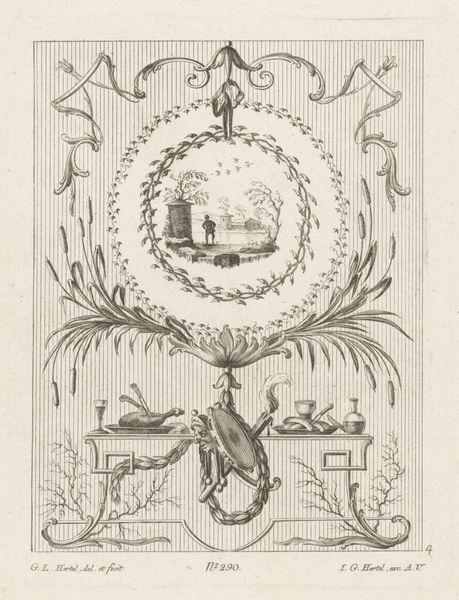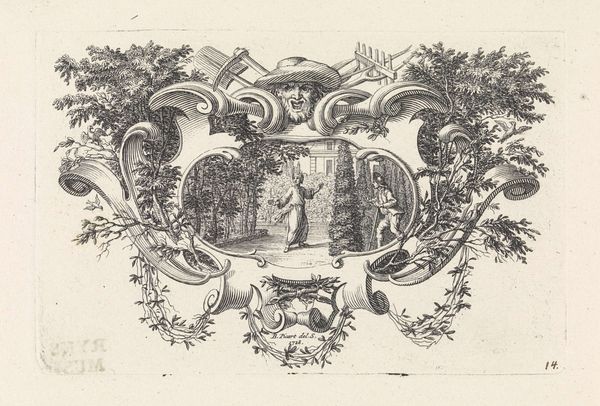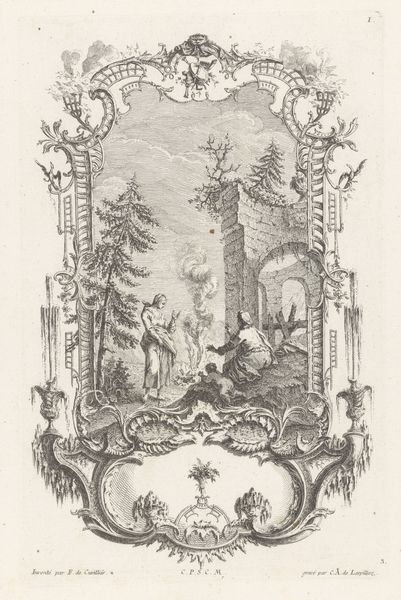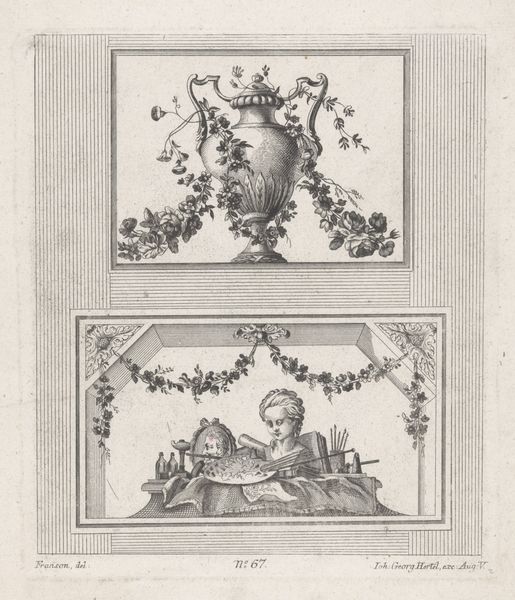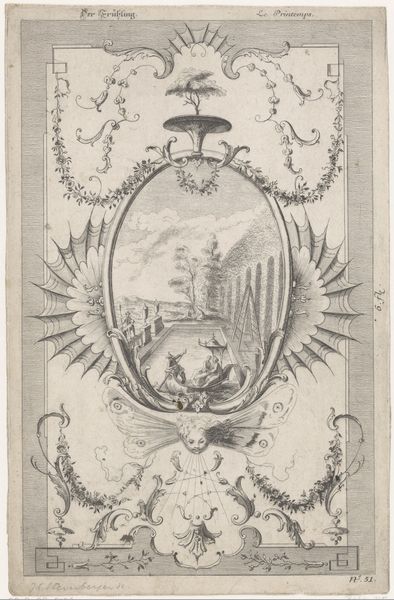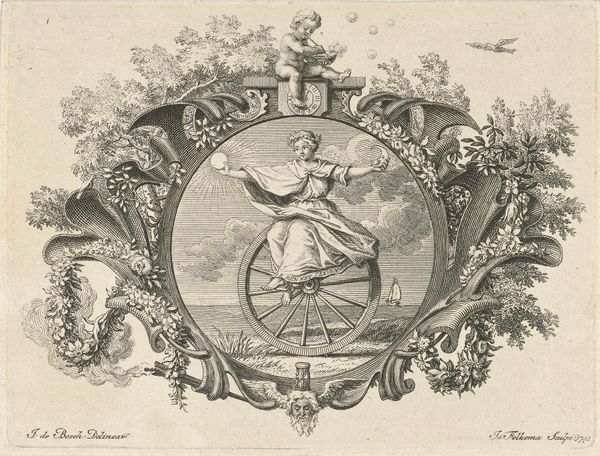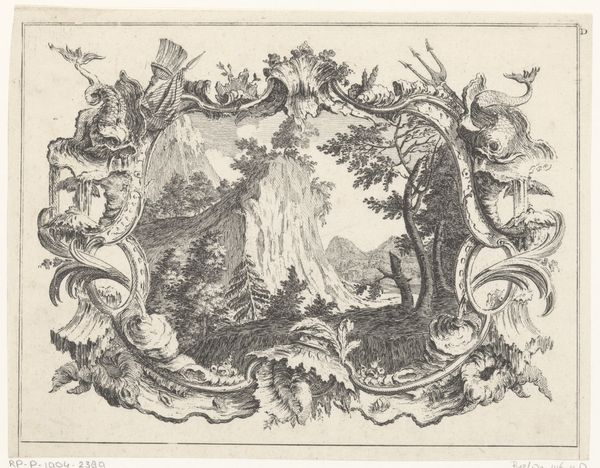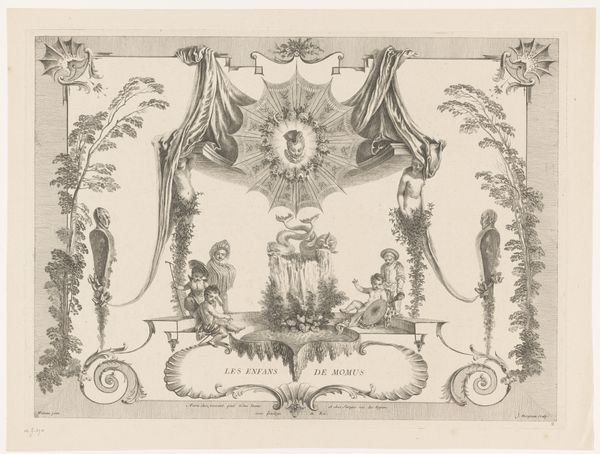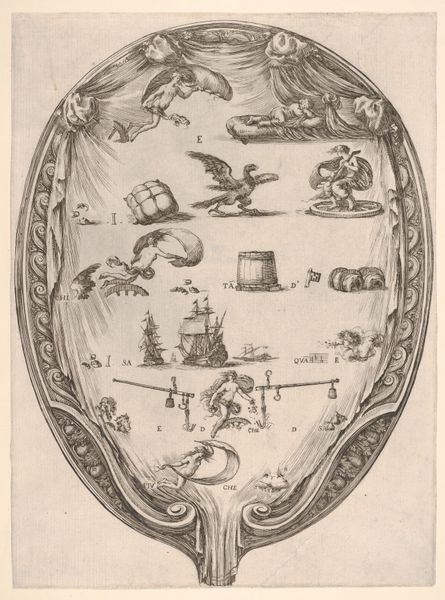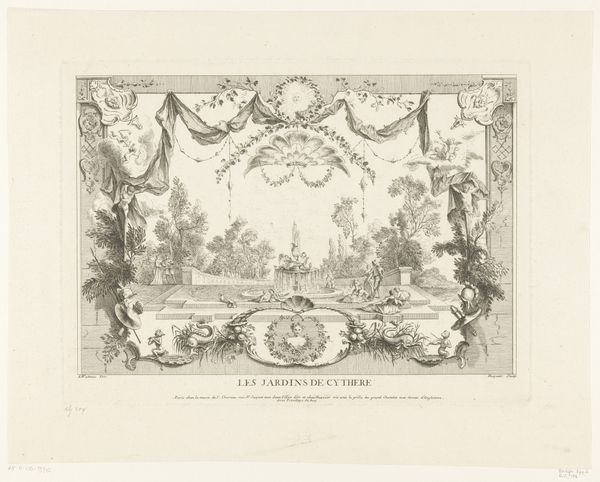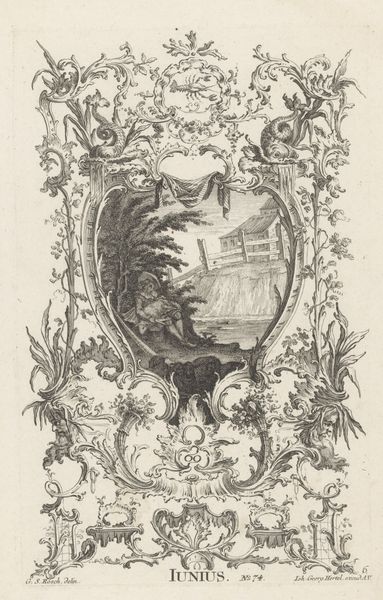
drawing, print, engraving
#
drawing
#
baroque
#
pen drawing
#
mechanical pen drawing
# print
#
pen illustration
#
pen sketch
#
old engraving style
#
landscape
#
ink line art
#
personal sketchbook
#
pen-ink sketch
#
line
#
pen work
#
sketchbook drawing
#
engraving
Dimensions: height 227 mm, width 164 mm
Copyright: Rijks Museum: Open Domain
Curator: So, we’re looking at "Medallion with man with scythe," an engraving made sometime between 1746 and 1775. It's unsigned, residing at the Rijksmuseum. Editor: Yes! At first glance, it appears so delicate, this ink drawing of a rural scene, framed by a garland and set against almost wallpaper-like stripes. What strikes you about this print? Curator: The production process itself. We should consider the material reality of prints in the 18th century. This wasn’t 'high art' necessarily, but a reproductive medium, enabling images and ideas to circulate widely, reaching new audiences, even adorning domestic spaces as suggested by those stripes. Editor: Interesting! So, instead of focusing on the artistic genius, you are interested in how this object worked? Curator: Precisely! Look at the precision of the line work – think about the engraver, a skilled artisan transforming an image onto a copperplate through intense labor. The availability of paper and ink mattered too; each impression represents the consumption of these materials. This image participates in a network of making, distribution, and reception that speaks volumes about 18th-century society. What about the subject matter? A man with a scythe – What do you think that conveys? Editor: It feels almost romanticized, like a celebration of rural labor...or perhaps is it actually commenting on the socio-economic disparities of the time, showing a romanticized or stylized farm? Curator: Exactly. Perhaps its the labor of reproducing images in a growing commercial market and consumption society? And what laboring means more broadly in a world of vastly different working conditions. Editor: I never thought about engravings this way before, considering the labor and materials involved, rather than just the final image! Curator: Seeing art through the lens of material conditions opens up so many avenues for understanding its significance!
Comments
No comments
Be the first to comment and join the conversation on the ultimate creative platform.
